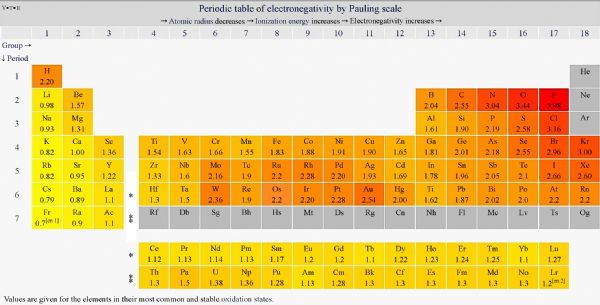Here, M stands for a metal; Fe, Ti, Mn, Co, Pb, and Sn are alternative candidates; and M
xO
y is the corresponding metal oxide. Taking the high exergy efficiency into consideration, Zn/ZnO is one of the most promising oxide-redox pair. Weidenkaff et al. conducted thermogravimetric measurements on the ZnO/Zn water splitting cycle [
131]. The dissociation of ZnO had to be operated at a temperature higher than 1823 K, and the dissociation rate showed a positive correlation with the temperature. It could be calculated that the activation energy ranged from 312 kJ/mol to 376 kJ/mol. A flow of inert gas could sweep the produced oxygen away, thus enhancing the dissociation reaction, but it would decrease the total energy conversion efficiency. The hydrolysis reaction was conducted at a temperature above the melting point of Zn with commercial Zn particles and solar Zn obtained from the dissociation of ZnO respectively. In solar Zn, there were dispersed ZnO impurities which would serve as nucleation sites for the oxidation that followed. Then solar Zn reacted with water faster and more completely compared to commercial Zn. Surface impurities appeared to favor the reaction rate in both steps, but their impacts on the cycling capability still remained unclear. To maximize the metal conversion, Ref. [
132] developed a special test apparatus to investigate the hydrolysis process of Zn powders in different conditions. There was an initial slow stage at a rather lower temperature. As the temperature increased to around 400°C, the reaction stepped into the fast stage. Hydrogen yield was sensitive to the temperature, and it increased from 24% to 81% of the theoretical value as the temperature rose from 185°C to 560°C. With the depletion of reactant, the reaction rate slowed down. In this study, the size of solar Zn particles formed could be as small as 200 nm. Ernst et al. [
133] found that the characteristics of Zn particles were regulated by Zn nucleation, condensation, and coagulation. Therefore, besides temperature, the length of condensation zone also affected the size of solar Zn particles, further influencing the hydrogen conversion. In Ref. [
134], Wegner et al. prepared Zn nanoparticles with average crystallite sizes of 70–100 nm to produce hydrogen. On the one hand, the high specific surface area of Zn nanoparticles enhanced the reaction kinetics, heat transfer, and mass transfer. On the other hand, the Zn nanoparticles could be entrained in gas flow, which could realize the simple, continuous and controllable supply of reactants and the removal of by-products. This process was conducted in a tubular aerosol flow reactor with three zones: Zn-evaporation zone at temperature above the Zn(l) evaporation temperature, steam quenching zone and Zn/H
2O reaction zone at the temperature below the Zn(g) saturation temperature. In this study, the highest hydrogen yield of 70% was attained at 1023 K, with an average hydrogen production rate of 1 mg/min. It was also found that a higher hydrogen yield was attained at a lower Zn-evaporator furnace temperature. The low temperature brought about the low Zn evaporation rate, thus reducing the sizes of Zn particles and augmenting their specific surface areas. To perfect this technology, more efforts should be made on the simultaneous synthesis and hydrolysis of Zn nanoparticles [
135]. Reference [
136] emphatically analyzed the kinetics of the second step. The hydrolysis of Zn was separated into two steps. The first step was the dissociative adsorption of water molecules on ZnO, forming surface hydroxylic groups. In the second step, the hydroxylic groups reacted with Zn, producing ZnO and hydrogen. At a low partial pressure of water vapor, the oxide film was thin and defective so that the two sub-steps could influence the reaction rate. At a high water partial pressure, the concentration of hydroxylic groups was on the verge of saturation, and the oxide film was thick. Thus, the diffusion of Zn through the passive ZnO film dominated the hydrogen generation rate. Supposing the production of hydrogen is 100 nm
3/h, the required quantity of Zn metal is 296 kg/h, and the amount of solar power reaches up to 542 kW. According to the investigation of Chambon et al. [
137], the activation energy of the hydrolysis reaction of Zn was 87±7 kJ/mol in the reaction order of 3.5±0.5. Steinfeld [
138] conducted exergy analysis and economic assessment on the solar hydrogen production via the two-step water-splitting thermochemical cycle of Zn/ZnO. Based on a 2nd-law analysis, the maximum exergy conversion efficiency reached up to 29% (ratio of the combustion heat of produced hydrogen to the solar power input) in this closed cycle. The cost of solar hydrogen from this approach was evaluated to be in the range of 0.11–0.17 $/kWh, which prevailed over the hydrogen production from electrolysis of water powered by solar, but was inferior to the hydrogen generation from steam-reforming of natural gas, whose cost approximated to 0.03–0.04 $/kWh. However, the solar thermochemical process eliminates the greenhouse gas emissions and ensures the high purity of generated hydrogen.
















